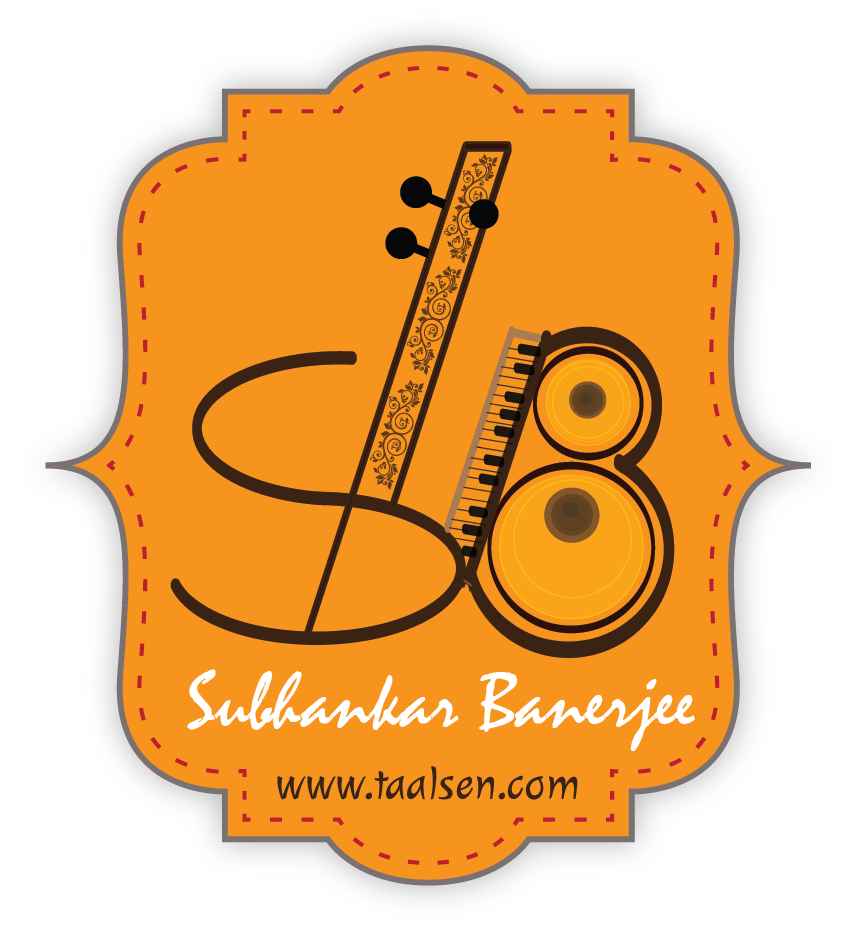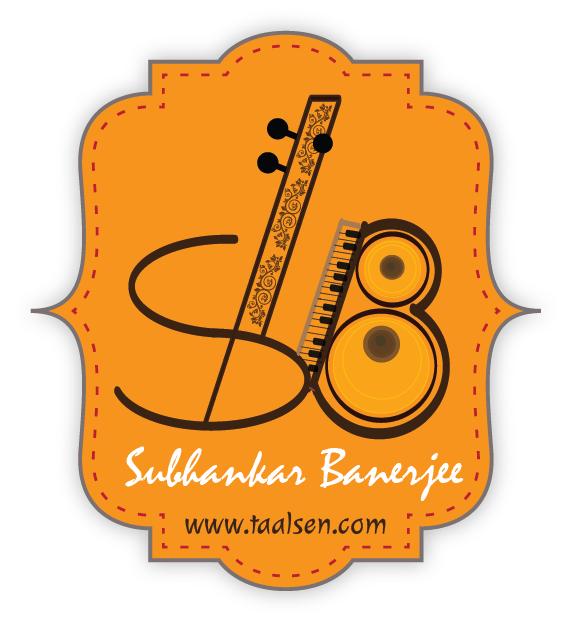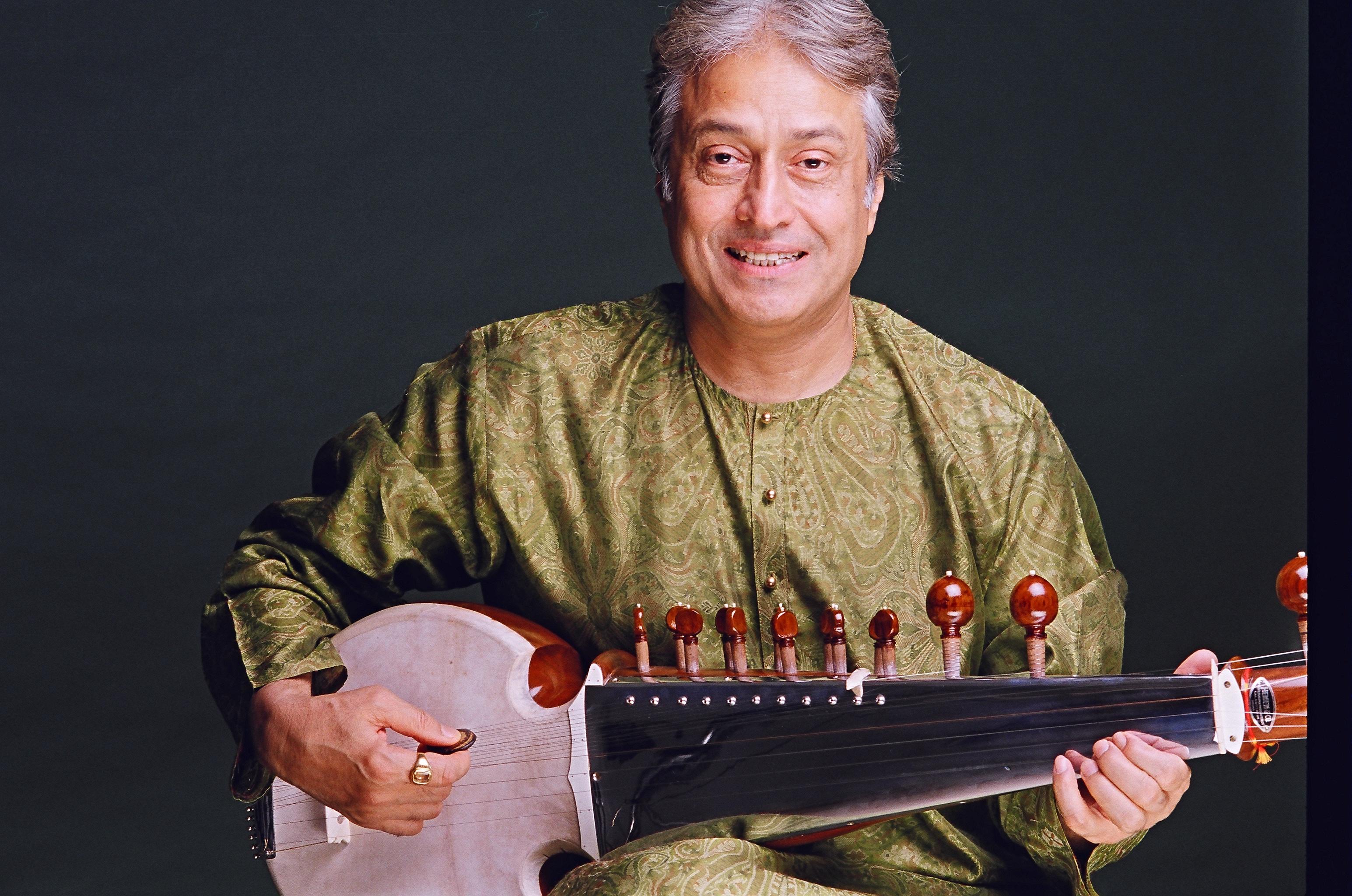Sarod maestro Ustad Amjad Ali Khan presented a major portion of his repertoire in a condensed form at a 100-minute recital at the Science City Auditorium on November 20. This was organized by Basanti Bidya Bithi and West Bengal Motion Picture Artist’s Forum in aid of the Institute of Child Health. It was a recital clearly meant to display as much variety as possible within the shortest time frame to keep a large audience tuned in from the first stroke to the last without any sense of boredom. The traditional formula of starting off with a long alap often bores the common listener, who talks to kill time before the more sensational sections start, spoiling the evening for the few appreciative listeners as well.
It was also a recital that displayed the wisdom of a maestro nearing 50 years of public performance. There was no undue exertion: the faster figures, whether low-stroke density or high-stroke density, were executed with a cool finesse that often disguised the skill involved in producing them.
Dedicating his recital to the three great musicians who passed away earlier this year, Ali Akbar Khan, Gangubai Hangal and D.K. Pattamal, the maestro started off with a drut teental gatkari in the raga, Hansadhwani, knit around a well-known khayal composition by Aman Ali Khan of the so-called Bhendibazar Gharana. With Subhankar Banerjee playing the theka at double tempo and weaving in some mridangam material, the sarod maestro mainly dwelt on leisurely melodic elaboration with easy-paced ekhara taan development, ladlapet and mild bolkari thrown in for variety.
Then there was a brief alap in Shri with fairly swift phrase development that struck the characteristic komal rishabh with dead accuracy and put more emphasis on the gandharthan usual. The jod and bol-ang thhok jhala completed this evocation of a firm raga image in about 16 minutes. The gatkari was in drut jhaptal and in the style believed to have been developed by his great-grandfather, Ustad Nanhe Khan, and gave the impression of controlled power-play. The ati drut teental gatkari quickly moved into jhala and ended with rousing but never raucous saath-sangat.
The melodious aochar and thumri-style deepchandi tala gatkari in Zilla Kafi eventually switched to the ragamalika mode and, after further melodic forays, ended with an excellent laggi section with Subhankar Banerjee’s tabla going great guns. The ragamalikamode also eventually entered a drut teental tarana in the raga, Bahar, composed by the sarod maestro as a homage to Amir Khusrau. Khusrau is credited with the creation of the tarana by all ustads, although its approximate equivalent in Carnatic music, the thillana, possibly existed before Khusrau arrived in the Indian subcontinent. Amjad Ali Khan first sang the tarana and then played it on the sarod, weaving in Mian ki Malhar in the jod-style elaboration. He brought in Kamod, Kalavati, Megh and Mian ki Malhar in the subsequent rapid bolkari as well.
The fifth item of the evening was the raga, Priyadarshini, composed by the ustad as a homage to Indira Gandhi soon after her assassination in 1984. The raga is mainly a blend of Yaman, Kaunsi Dhwani and Bihag. In keeping with the mood in which the raga was created, the brief vilambit teental gatkari mainly concentrated on slow melodic elaboration.
The drut teental gatkari in the raga, Durga, that came next featured a composition that was among the audiences’ favourites in the first stage of Amjad Ali Khan’s career. He played with the old charm, going in for the simple but cleverly paused saath-sangat that tricks the tabla player into striking out of turn in the final part. The ati drut portion, featuring the companion piece of the first composition, developed the jhala portion with exquisite bolkari and fast ghasits with ample use of sound dynamics.
Finally, there was the piece that starts with an introduction made up of a sort of inversion of Rabindranath Tagore’s Ekla cholo re and then swings into the song proper with gusto, adding an extra folk dimension with stroke niceties. The ustad always plays this with unfailing musicianship and this occasion was no exception. The third part of this item moves into what sounds like a folk piece from the Northeast using the scale known as pentatonic minor in Western music and the one used by Raga Dhani in Hindustani music: Sa ga Ma Pa ni. It, of course, returns to the Tagore song finally, with the audience showing its appreciation.
Source : https://www.telegraphindia.com/1091205/jsp/opinion/story_11821431.jsp


